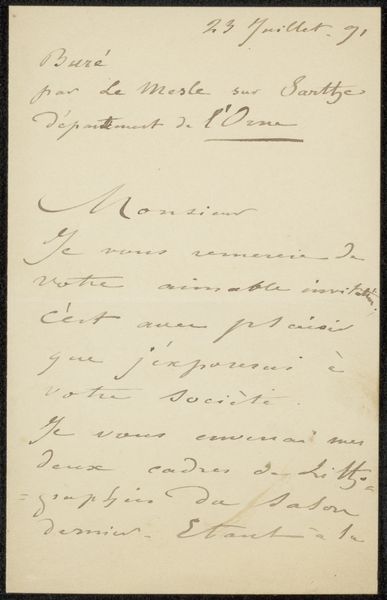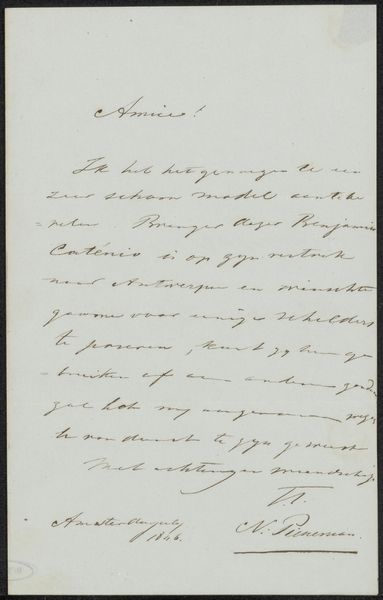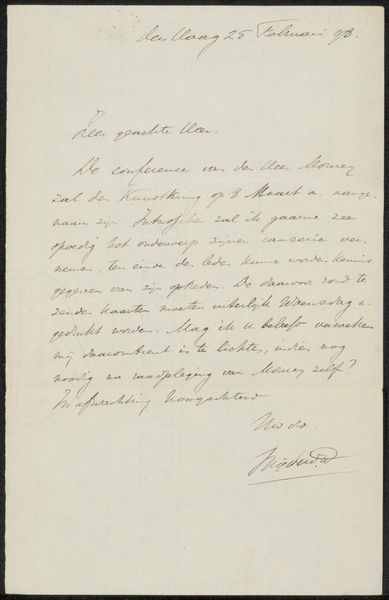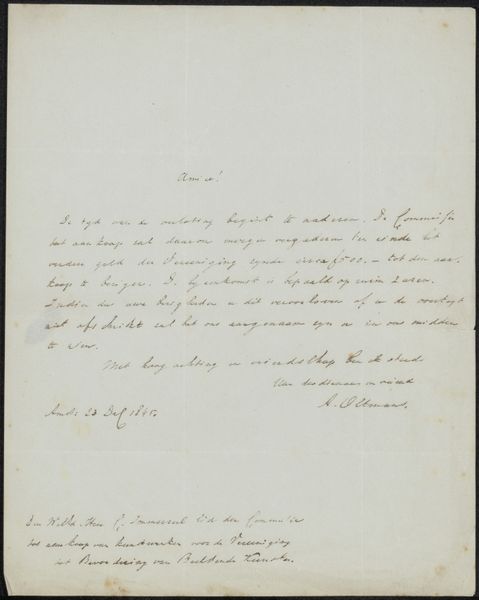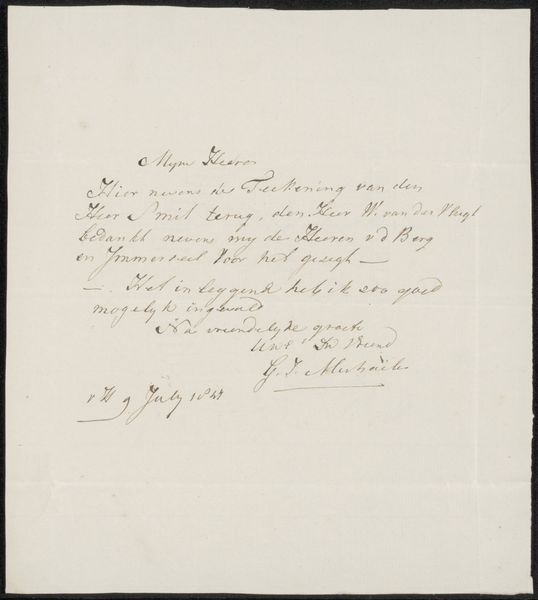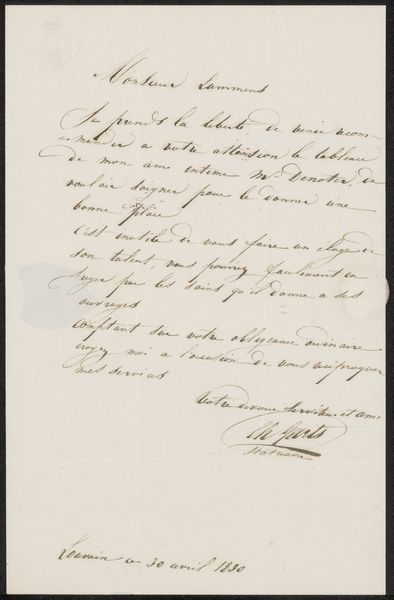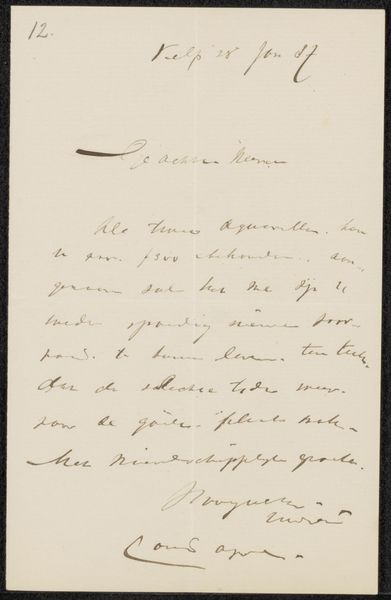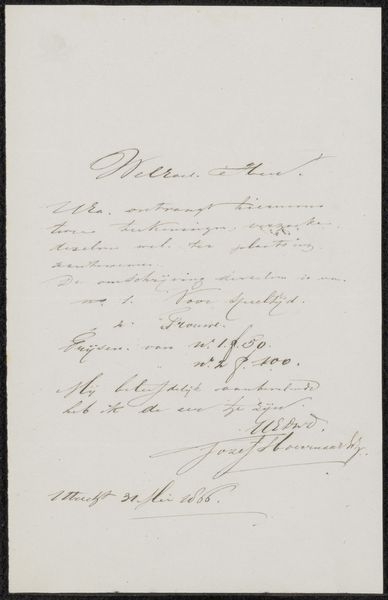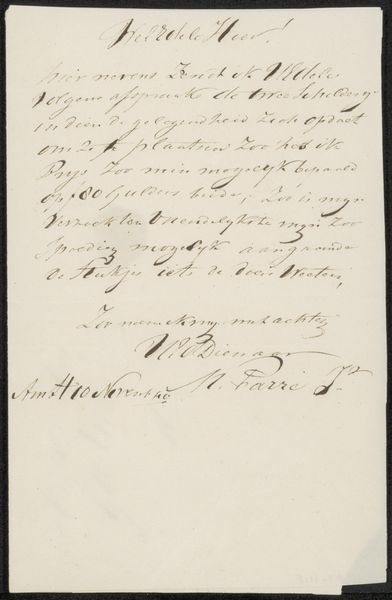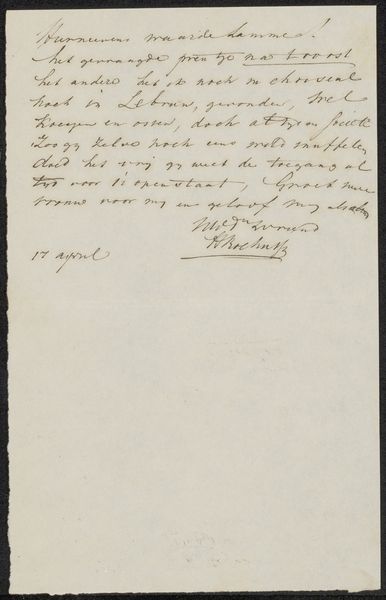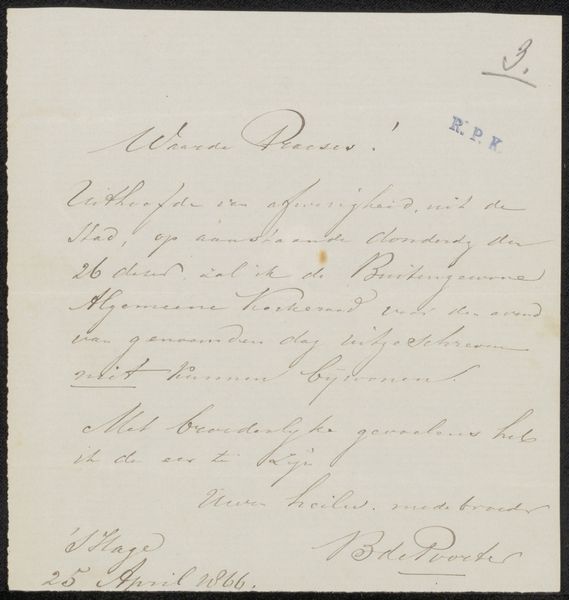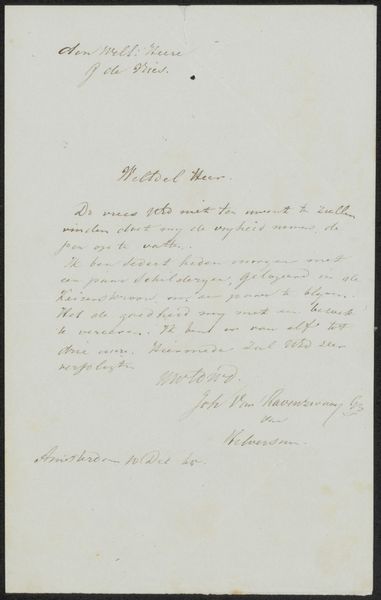
Brief aan de Commissie van de Tentoonstelling van Levende Meesters in Den Haag Possibly 1851 - 1855
0:00
0:00
drawing, paper, ink, sculpture, pen
#
portrait
#
drawing
#
ink drawing
#
pen sketch
#
paper
#
ink
#
sculpture
#
pen
#
genre-painting
Copyright: Rijks Museum: Open Domain
Editor: Here we have "Brief aan de Commissie van de Tentoonstelling van Levende Meesters in Den Haag" – or "Letter to the Commission of the Exhibition of Living Masters in The Hague"—thought to be from around 1851 to 1855, made with pen and ink on paper. It is, plainly, a letter… slightly faded but still legible. I find its straightforwardness compelling, its mundane nature almost refreshing. How do you interpret this work, with its combination of text and presumed purpose? Curator: This isn't just a simple letter, but a potential glimpse into the power dynamics within the 19th-century Dutch art world. We see an artist, Jean Theodor Stracké, potentially requesting consideration for exhibiting his sculpture—perhaps a bust—at a prestigious exhibition. What does it say about access, about whose voices were heard, and whose were potentially marginalized? Think about the commission itself: who were these 'Living Masters'? Did their criteria promote inclusivity or reinforce existing hierarchies based on gender, class, or artistic style? Editor: That's fascinating. I hadn’t considered the potential subtext of seeking permission, or what that implied. It seemed such a practical document, but now I see it could reflect a struggle for recognition. Curator: Exactly. Documents like this aren't neutral; they can reveal the hidden struggles for recognition and validation that many artists face. Letters like these contribute to our understanding of how artistic canons are formed, and who gets left out of the narrative. The very act of applying to this commission is part of an ongoing struggle. Does it shift your perspective on its mundane nature? Editor: It absolutely does. It’s a reminder to look beyond the surface and consider the underlying social and political contexts that shaped artistic production. I guess you can find complexity in a letter. Curator: Precisely. And that’s how we unearth richer, more nuanced understanding of art history and its impact on contemporary discussions.
Comments
No comments
Be the first to comment and join the conversation on the ultimate creative platform.
